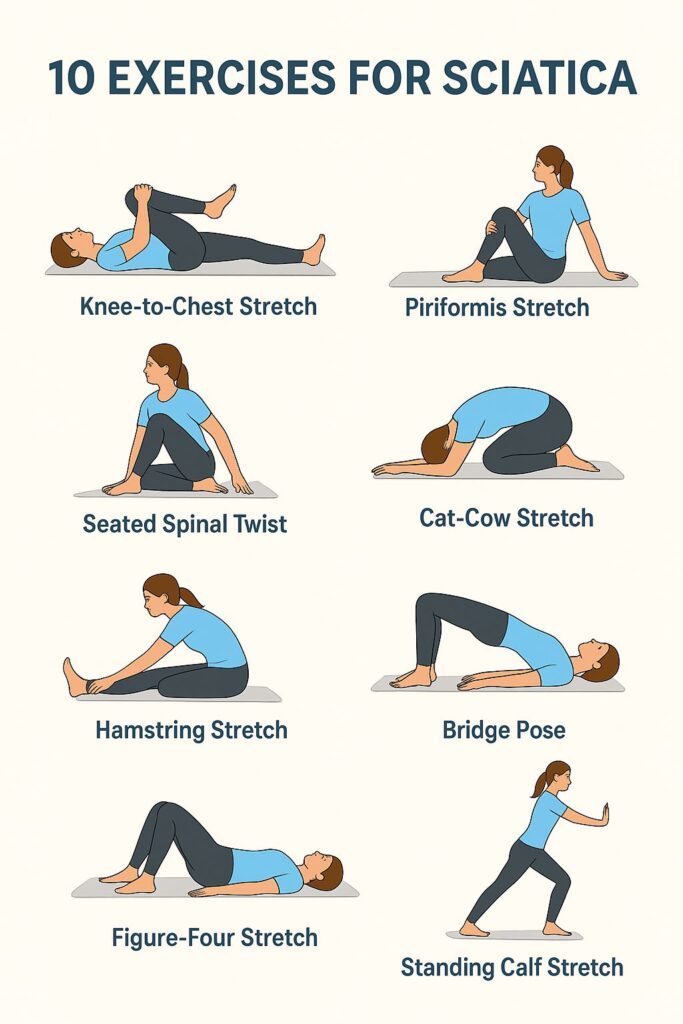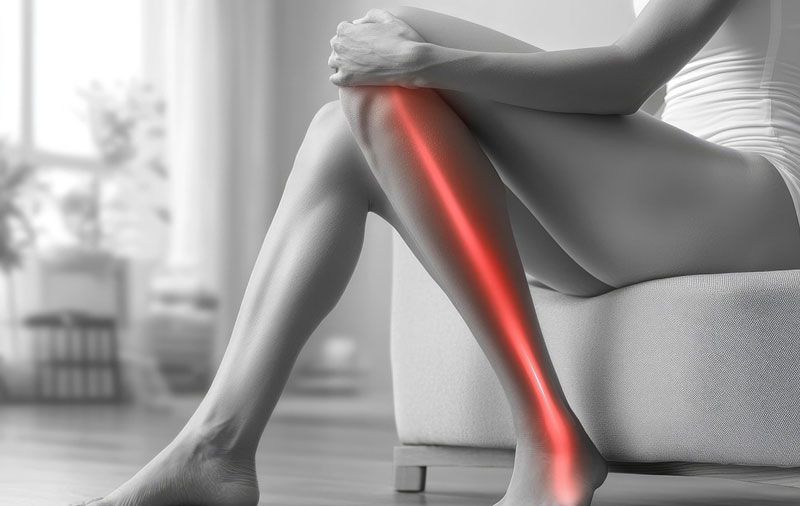If you’ve ever felt a sharp, burning pain that shoots from your lower back down your leg, you’ve met sciatica. It’s a pain that makes even simple things—like sitting at your desk, bending to tie your shoes, or walking across a room—suddenly feel impossible. Sciatica isn’t a disease in itself; it’s a sign that your sciatic nerve, the longest nerve in your body, is irritated or under pressure.
This nerve starts in your lower spine, runs through your hips and buttocks, and travels down the back of each leg. When something pinches or inflames it, your body lets you know—loudly.
Why Sciatica Happens
The causes of sciatica aren’t mysterious, but they vary. Here are some of the usual suspects:
- Herniated disc: A spinal disc slips or bulges out of place, pressing on the nerve.
- Spinal stenosis: The space around your spinal cord narrows, squeezing nerve roots.
- Degenerative disc changes: Discs naturally wear down over time, creating irritation.
- Piriformis syndrome: A tight muscle deep in the buttock presses against the nerve.
- Bone spurs: Extra bone growth in the spine can pinch nearby nerves.
- Injury: A fall, accident, or awkward lift can cause swelling and nerve irritation.
- Pregnancy: The added weight and shifting posture sometimes irritate the nerve.
Even daily habits, like long hours of sitting or carrying extra weight, can make you more prone to flare-ups.
How It Feels
Sciatica isn’t subtle. The pain often travels in a straight line from your back to your foot, usually on one side. Some people feel it as stabbing pain, others as a dull ache or a burning sensation. Tingling, numbness, or weakness in the affected leg is common.
You may notice it gets worse when you sit, stand for too long, cough, or sneeze.
Relief and Recovery
The good news: most people don’t need surgery. Sciatica often improves with a mix of rest, movement, and small adjustments.
Home Care
- Move, but gently: A full day in bed can make things worse. Short walks help circulation and healing.
- Ice first, then heat: Cold packs reduce swelling in the first 48 hours; heat relaxes tight muscles later.
- Stretch carefully: Focus on hips, hamstrings, and lower back.
- Sit smart: A chair with good lumbar support beats a soft couch.
Medications
Over-the-counter anti-inflammatories can help, and if pain is stubborn, a doctor may prescribe something stronger or add muscle relaxants.
Physical Therapy
A physiotherapist can help strengthen your core, correct posture, and teach movements to prevent future episodes.
Injections
Steroid injections can calm inflammation and pain for weeks or months, giving your body time to heal.
Surgery
This is rare, reserved for severe cases—like if you have trouble controlling your bladder or bowel, or if pain doesn’t ease after months of treatment.
Ways to Speed Up Recovery
- Stretch every day, even if it’s just for a few minutes.
- Take short standing or walking breaks every half-hour if you sit a lot.
- Adjust your workspace—raise your screen, use a firm chair, and keep feet flat.
- Try massage, acupuncture, or gentle chiropractic care.
- Add anti-inflammatory foods to your diet, like salmon, spinach, and turmeric.
- Build core strength gradually; strong muscles protect your spine.
When to Get Help Right Away
Don’t ignore sciatica if:
- The sciatica pain is severe and getting worse.
- Your leg suddenly feels weak.
- You lose control of your bladder or bowels.
- Numbness spreads to your inner thighs or groin.
These are signs of serious nerve compression that needs urgent care.
Home exercises
Here’s a list of 10 simple home exercises to help ease sciatica pain and improve flexibility:
- Knee-to-Chest Stretch – Gently pull one knee toward your chest to release lower back tension.
- Piriformis Stretch – Cross one ankle over the opposite knee and lean forward to stretch the piriformis muscle.
- Seated Spinal Twist – Sit with one leg extended, cross the other leg over, and twist gently to stretch your spine.
- Cat-Cow Stretch – Alternate between arching and rounding your back to loosen spinal muscles.
- Child’s Pose – Kneel and stretch your arms forward to relax your lower back and hips.
- Hamstring Stretch – Sit or lie down and extend one leg straight, gently reaching for your toes.
- Pelvic Tilt – Lie on your back, tighten your core, and flatten your lower back against the floor.
- Bridge Pose – Lift your hips off the floor to strengthen your glutes and core.
- Figure-Four Stretch – Lie on your back, cross your ankle over the opposite knee, and pull your leg closer to stretch deep hip muscles.
- Standing Calf Stretch – Stand and press one heel into the floor to ease tension in the lower leg and improve flexibility.

Quick Q&A
How long does sciatica pain last?
For many, the worst of it fades in 4–6 weeks, though some cases linger longer.
Can it come back?
Yes, especially without posture changes or regular movement.
Is rest good or bad?
A little rest helps, but long stretches in bed often slow recovery.
Does exercise help?
Yes, as long as it’s low-impact. Walking, swimming, and gentle yoga are great options.
Will I need surgery?
Unlikely. Surgery is for extreme, persistent cases.
Final Thoughts
Sciatica is painful, but it’s not a life sentence. Most people recover fully with a bit of patience and the right mix of movement, therapy, and self-care. The key is not to ignore it. Early action—seeing a doctor, adjusting your posture, and staying active—often means faster relief and fewer flare-ups in the future.

